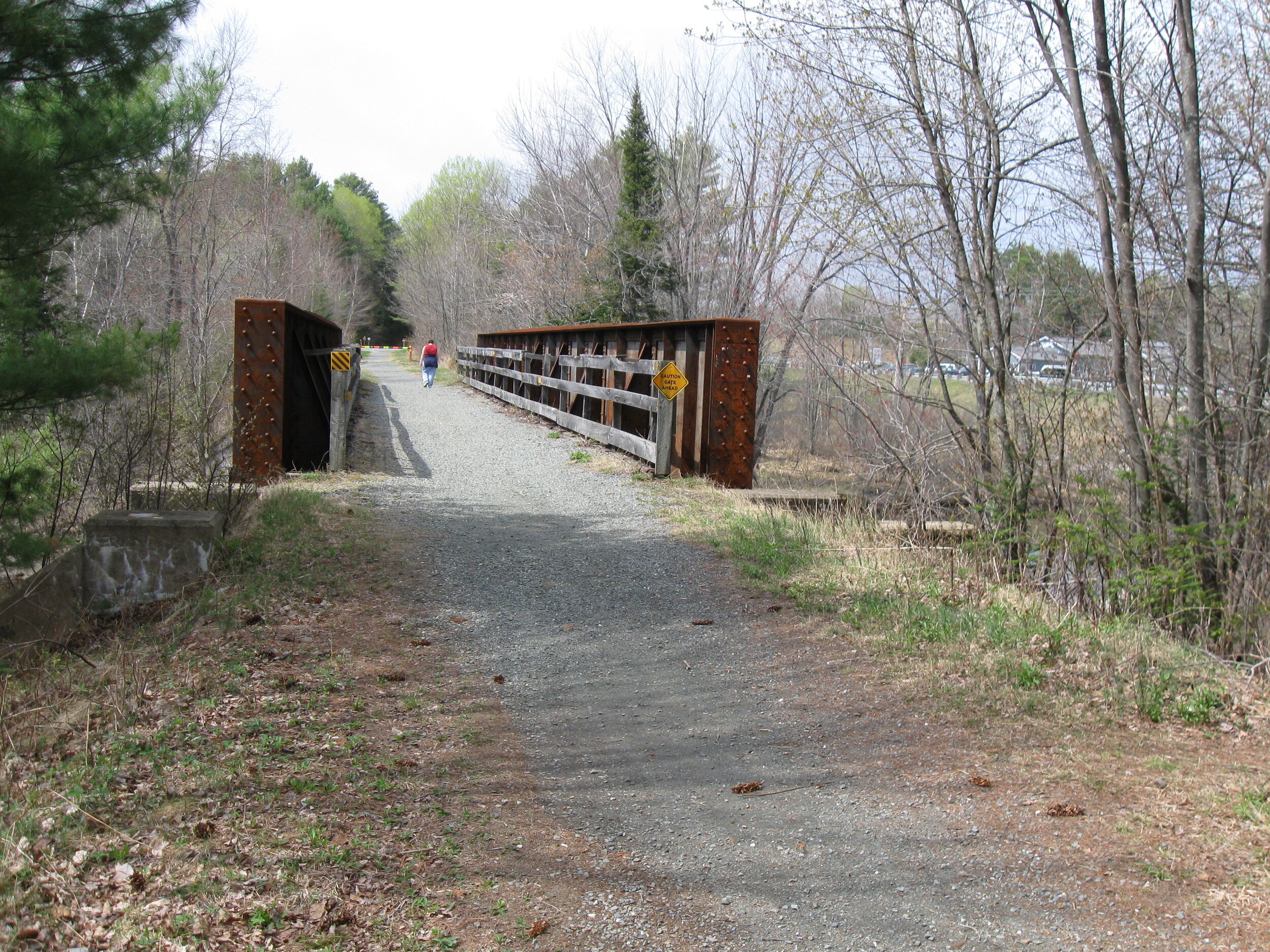Exploring the Rail Trails around Concord
What is a rail trail, you may ask? It is the conversion of a disused railway track into a path for walking, cycling and running (without rails). The defining characteristics of railway lines—flat, long, frequently running through woods and historical areas—make them appealing for trails. There are approximately 443 miles of active railroad in New Hampshire today. But, New Hampshire also owns approximately 330 miles of abandoned railroad lines. Most of these are used as recreation trails under the management of the Department of Natural and Cultural Resources, Bureau of Trails.
As the state capital, and set in the heart of New Hampshire, Concord was once a booming rail town. Today, several new rail trails are open, or in the phases of being planned. Here are three ways to explore the footprints of Concord’s rail past.
Here you can pedal the rails on a custom Rail-Bikes. Rail Biking is an activity that most folks can do. The trip is 6.4 miles and takes about 2 hours. But. advanced booking is required.
Concord – Lake Sunapee Rail Trail
The Concord – Lake Sunapee Rail Trail is a scenic, family-friendly bike and walking trail to connect the communities along the historic Concord-Claremont Railroad line, from Concord to the southern tip of Lake Sunapee. The old railroad line passes through Concord, Hopkinton, Warner, Sutton, Bradford and Newbury. Several portions of the trail are open today, and local friends of the trail are working together to build the rest. Check out Trail highlights for sections of trail open today or projects in progress.
This 59- mile trail is one the longest rail trails in the region. It begins just north of Concord, passes the Webster Place off Route 3 in Franklin and ends at Spencer Street in Lebanon. The trail spans two counties and has been developed to make it a destination four-season trail. The surface on most of the trail is perfect for walking and biking as well as all other uses. The scenery is pure NH as it meanders through farmlands, lakes and charming towns. Mascoma Lake, the Enfield Depot, Potter Place Depot, Highland Lake and the covered bridge at Bridge Road are must see parts of the trail.
Built mostly by Irish laborers who had fled the potato famine, the Northern Railroad “steam highway” reached Lebanon in 1847. At the ribbon cutting Daniel Webster spoke of the extraordinary time Americans were living in. “The world has seen nothing like it before.” Boston investors and the Beantown mayor were in attendance. The line soon became the primary connection to Quebec via Vermont lines, hauling freight and passengers to the ports on the St. Lawrence River for Europe. Towns along the way grew substantially, with Canaan essentially relocating itself next to the tracks. Boscawen near the southern end of the trail and Lebanon in the northwest both became major manufacturing centers in the following decades.
What is a rail trail, you may ask? It is the conversion of a disused railway track into a path for walking, cycling and running (without rails). The defining characteristics of railway lines—flat, long, frequently running through woods and historical areas—make them appealing for trails. There are approximately 443 miles of active railroad in New Hampshire today. But, New Hampshire also owns approximately 330 miles of abandoned railroad lines.

